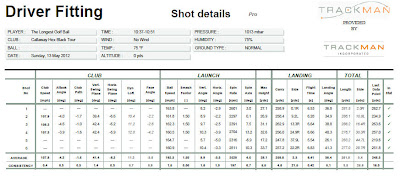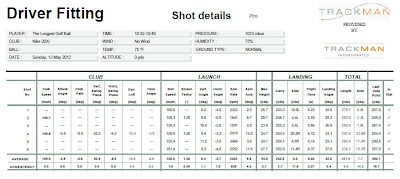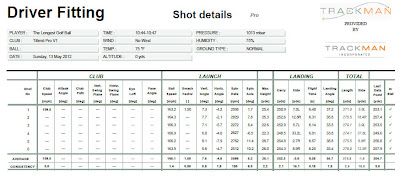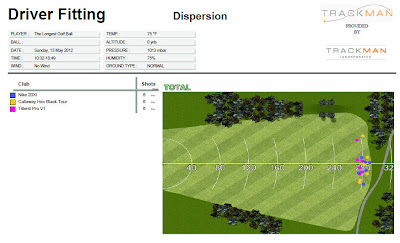Today’s post is written by Taylor Morton, who did his 6th grade science project on golf balls out at the Haggin Oaks Golf Complex with the assistance of golf professional, Kellen Arceo, and the TrackMan launch monitor. Using the Trackman Launch Monitor, Taylor and Kellen tested the Callaway Hex Black, Titleist Pro V1 and Nike 20XI-X golf balls. Which golf ball traveled the furthest? The results may surprise you!
Problem: Which kind of golf ball travels the furthest?
Hypothesis: If I test which brand golf ball travels the furthest, then I think the Titleist Pro V1 golf ball will travel the furthest because it is the number one selling ball in golf.
Materials: Callaway Hex Black balls (6), Titleist Pro V1 balls (6), Nike 20XI balls (6), TrackMan launch monitor, Ping G20 Driver
Research: There are two types of balls, multilayer and two-piece. Multilayer balls have multiple layers so they usually provide the best all-around play, but they tend to be more expensive. All the balls I am testing are multilayer balls. Two-piece balls are made of a single core and are made for distance. Most golf ball cores are made out of rubber like the Titleist Pro V1 and the Callaway Hex Black balls. However, the Nike 20XI golf ball utilizes a resin core and claims that it changes the weight structure to create a higher moment of inertia. Moment of inertia is the energy released by the impact of the golf club. The amount and shape of the dimples on a golf ball greatly varies. According to golfball-guide.de, the more dimples on a golf ball, the higher it goes. Thus a ball with too many dimples will go too high and lose distance. Traditionally, the dimples on golf balls have always been round, but modern science shows that balls with hexagonal dimples, such as the Callaway Hex Black golf balls that I tested, have a lower drag compared to the standard round dimpled balls. The drag of a golf ball is the friction between the air and the ball and can affect the speed in which it travels. The cover of a golf ball is usually made out of urethane elastomer or surlyn. Urethane is a plastic rubber mix and is the cover for all three of the balls I’m testing. Surlyn is plastic and is a cheaper material than urethane.
Procedures: On Sunday, May 13th, 2012, I utilized the TrackMan launch monitor at the Haggin Oaks Golf Complex in Sacramento, CA. The TrackMan is used in the golf industry by golf club manufacturers, golf ball manufacturers and Tour professionals to test the performance of golf clubs and balls. Using Doppler radar, this machine allowed Kellen Arceo, a golf professional at the Haggin Oaks Golf Complex, to hit 3 different sets of six golf balls of equal golf club head speed on the driving range. To minimize differences, a PING G20 driver was used on all shots. The TrackMan gave us an accurate shot distance equal to 0.1 yards. I averaged the six total shot distances for each golf ball and then compared the averages for each of the three golf balls I tested.
Here are the Trackman results. (They are hard to read. Click on each piece to open a larger sample)
Callaway Hex Black
Nike 20XI
Results: By using the TrackMan launch monitor, I was able to find the average golf ball shot distances for the Callaway Hex Black, Titlesit Pro V1 and the Nike 20XI golf balls. Using this system I was able to get these results:
Conclusion: The Nike 20XI went the furthest by only 0.1 yard and it was the only golf ball of the three that had a resin core. This could have made more energy release when the club came in impact with the ball, thus making it fly farther than the others. My hypothesis was incorrect. The Nike 20XI and the Callaway Hex Black golf balls both traveled farther than the Titleist Pro V1. Interestingly enough, the Callaway Hex Black balls flew the furthest in the air, but they rolled the least out of the three golf balls tested. Also, the Titleist Pro V1 ball had the highest ball speed at 165.1 mph, but it flew the shortest distance. There are many things that can alter the distance of a golf ball from the shape of the dimples to the number of layers its core is made from. I’ve also learned that just because a golf ball may travel the fastest, it does not mean it will go the furthest. Aerodynamics can play an important role in the golf ball’s distance. The moment of inertia is also an important factor in how many total yards the golf ball will travel.









20 Comments